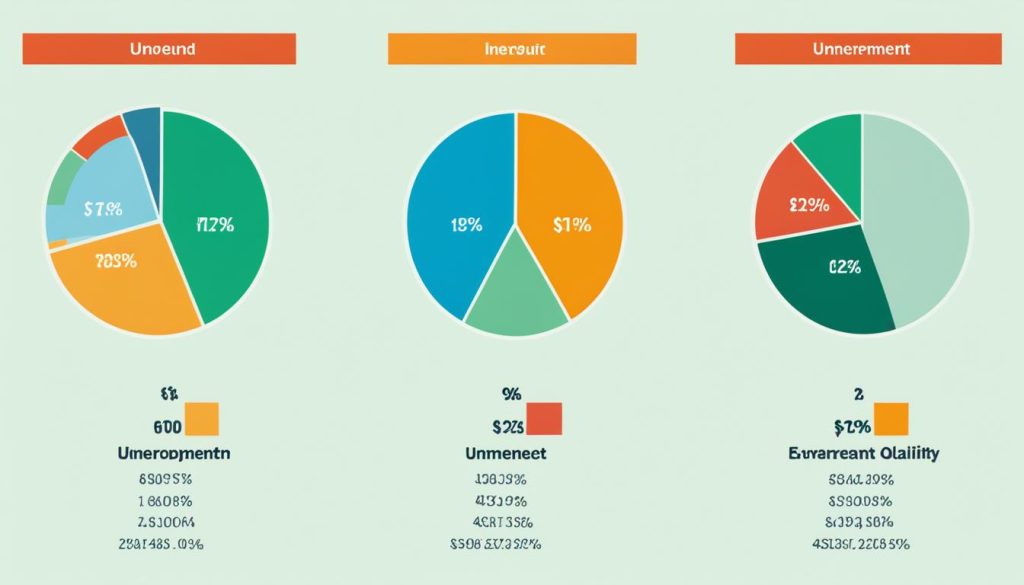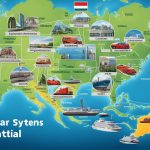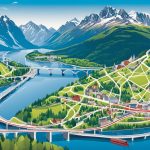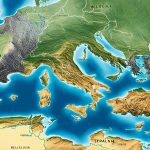Comparing economies helps us understand what makes societies thrive. We must look at living costs, healthcare, and income per person. By analysing the Netherlands, Ireland, and the USA, we see differences in how people live and the economy’s strength.
Overview of National Profiles
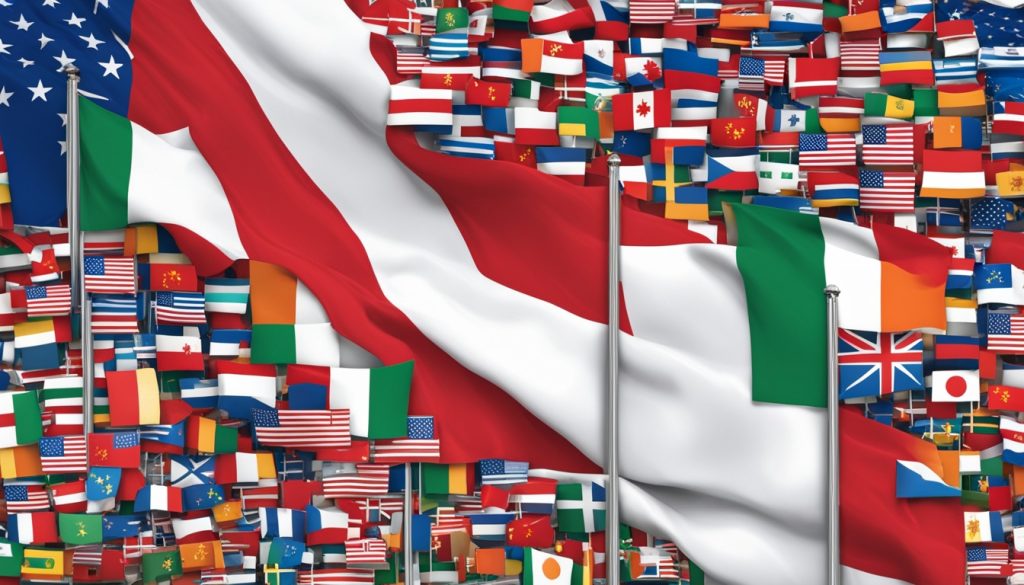
Northern and Western Europe have unique nation traits worth exploring. They differ in population density, governance, and capital city life. Ireland and the Netherlands are key examples showing this diversity.
Geographic and Demographic Snapshot
Ireland, in Northern Europe, boasts lush landscapes and over 5 million people. Its population density is 73.0 per square kilometre.
Meanwhile, the Netherlands, in Western Europe, has 426.1 people per square kilometre. This shows its dense living areas. Both countries however align with Europe’s high life expectancy, having slight differences in birth and death rates.
Political Structures and Stability
Ireland is a parliamentary republic with Dublin as its capital. The Netherlands is a constitutional monarchy with Amsterdam at its core. Both have high political stability scores. They’re committed to civil rights, demonstrating strong democratic values and freedom.
Comparing Capital Cities: Dublin vs Amsterdam vs Washington D.C.
Dublin, Amsterdam, and Washington D.C. offer a rich historical and governance mix. Dublin and Washington share a parliamentary system. Amsterdam, with its monarchic roots, mixes tradition and modernity. Each capital shows the uniqueness of its country’s government system.
An Examination of Population Dynamics
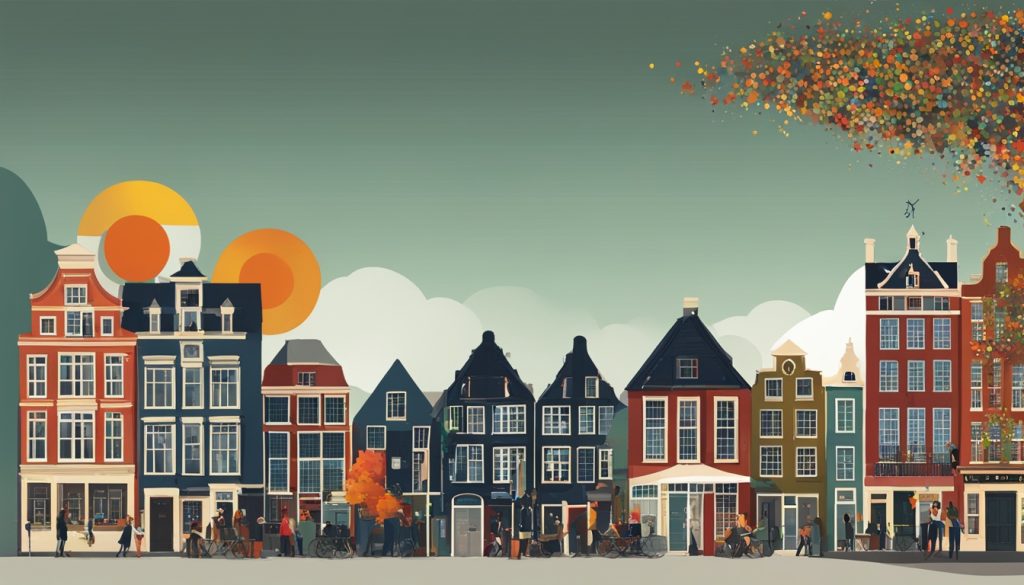
The way population growth, age distribution, and migration mix is changing countries. These changes affect how many people live in an area, their average age, and how long they live. These shifts have big effects on the economy and culture. In particular, how old most people are and how migration changes job markets and cultural variety are changing our world.
Population Growth Trends
In Ireland, more than 5 million people now call it home. The Netherlands is home to over 17 million people, making it much more crowded. It has 426.1 people per square kilometre, while Ireland has only 73. This shows how differently populations are growing in these countries. It also shows the challenges and chances that come with different levels of population density.
Age Distribution and Its Economic Impacts
Age distribution is key to predicting a country’s economic future. Ireland’s population is quite young, with an average age of 39.8. On the other hand, the Netherlands’ average age is 42.2. The age of a population affects many things. This includes job market plans and health care needs. Knowing the median age is important for planning and making policies.
Migrant Influence on Workforce and Culture
Migration does more than just increase the population. Ireland sees a migration rate of 2.99‰, and the Netherlands sees a rate of 3.24‰. Each group of migrants brings new cultures and skills. They boost cultural variety and bring new ideas. This leads to more innovation and economic strength.
Dissecting the Quality of Life Indices
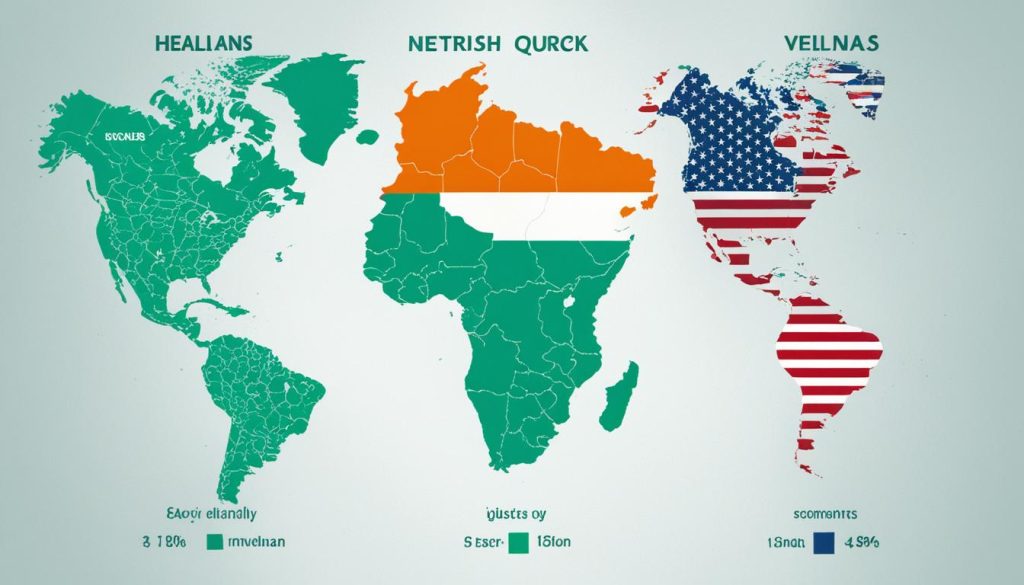
Quality of life looks at many areas including economics, social aspects, and health. It helps families and individuals decide where to live. The quality of life ranking is vital for this. It shows things like living standards and happiness in different places.
In comparing countries, the climate rating stands out. It greatly affects how people feel about where they live. The Netherlands, for example, has a better climate rating. That’s because it has a moderate climate. Ireland, however, scores lower due to its rainier weather.
The cost of living comparison is also key. It shows how much people can buy with their money in different countries. Ireland and the Netherlands offer good living standards. But, they differ slightly in living costs. Compared to the USA, living in Ireland might be a bit more expensive than in the Netherlands.
- Econometric assessments indicate Ireland’s cost of living index at 43.
- The Netherlands stands close with a cost of living index at 45.
- Both contrast against the USA’s index set at 100.
These comparisons are useful for those moving to new countries. They also help leaders improve their nation’s living standards.
Evaluating Political and Civil Freedom
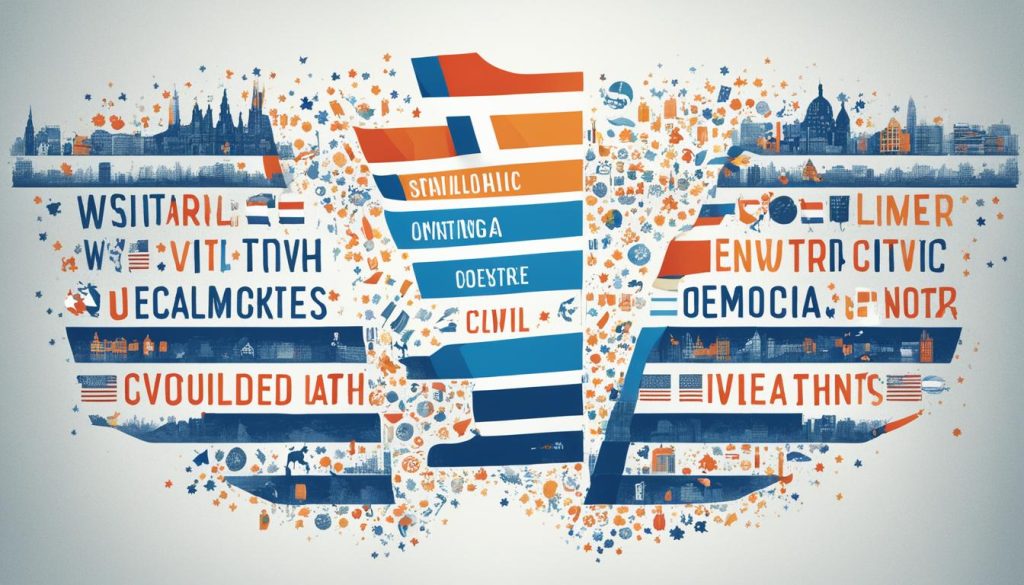
In our time, we look closely at how nations handle governance and civil rights. Political stability and democratic freedoms are key to seeing if a country is truly peaceful and moving forward. Ireland and the Netherlands are great examples of this balance. They show how governments can work well with a strong respect for civil liberties.
Political Stability Scores
Having a stable government is essential. It builds trust that leads to investment, innovation, and progress. Ireland shines with a score of 85. This score highlights its strong and stable environment for economic and social growth. The Netherlands also does well, with a score of 79. This confirms its stable and calm political scene.
Civil Liberties and Rights Comparison
A strong basis in civil rights and freedoms is crucial for peace. Ireland and the Netherlands excel in protecting these liberties. Ireland scores an impressive 94 for its efforts. The Netherlands scores even higher, at 98. This shows that they do more than just respect democratic values – they actively support them.
Quality of Healthcare Services
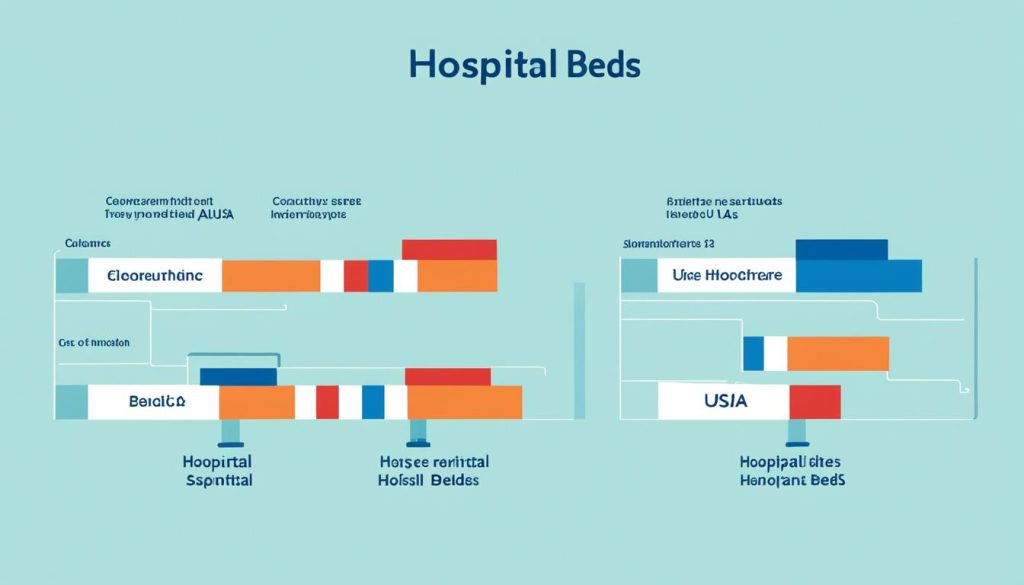
A nation’s health largely depends on the strength of its healthcare services. For countries like Ireland and the Netherlands, providing easy access to healthcare and upholding high patient care standards is crucial. These factors show how well a country can meet its people’s health needs.
Access to Medical Services
How easy it is to get healthcare shows how much a country cares for its people’s health. We can measure this by looking at the number of doctors and hospital beds per thousand people. In Ireland, there are about 4.06 doctors for every 1000 people. They also have 2.97 hospital beds per 1000 citizens, showing a strong commitment to healthcare. The Netherlands, on the other hand, has 3.84 doctors per 1000 people. But, they have more hospital beds, 3.17 per 1000, making sure people can get the medical help they need.
Effectiveness of Healthcare Systems
The quality of care and health service efficiency are key in evaluating healthcare. Ireland and the Netherlands both have health scores of 82 out of 100. This high score shows their joint efforts in providing excellent healthcare. It also highlights the effectiveness of their healthcare systems.
These scores point to the hard work of medical staff and policy makers. They aim for the best patient outcomes and healthcare sector efficiency. By working together, they ensure that patients receive the best care possible.
Delving into Economic Health
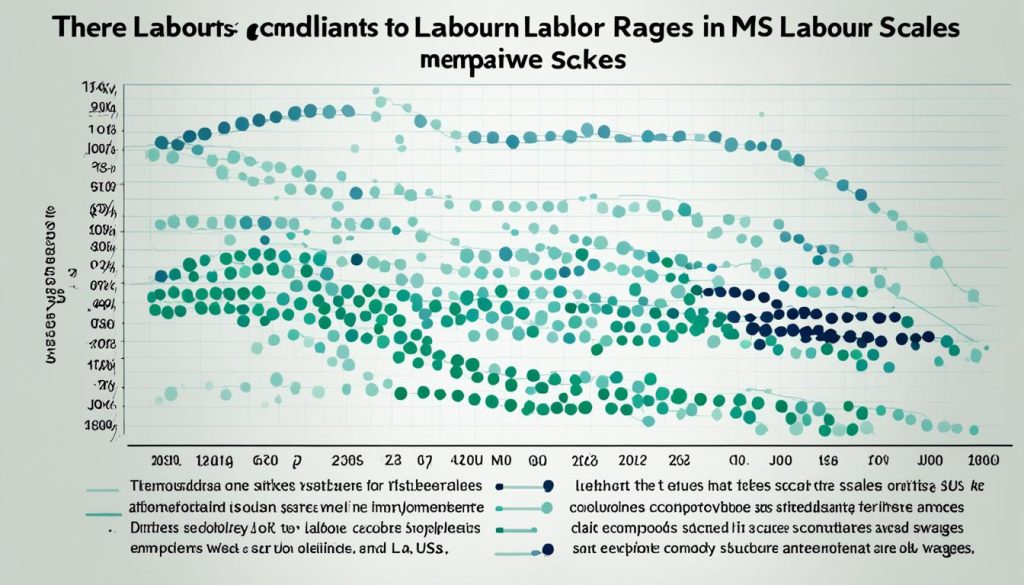
The health of an economy is shaped by key factors, like unemployment and inflation rates. The unemployment rate shows how easy it is to find work. The inflation rate affects how much we pay for things. Together, they impact how much financial pressure families face.
Unemployment Rates and Job Security
In Ireland, the unemployment rate is at 4.4%. This shows the country has strong job markets. The Netherlands has an even lower rate at 3.5%. This means more people there have stable jobs.
Inflation and Its Effect on Living Standards
But, the inflation rate tells another story. It shows how prices are going up. Ireland’s inflation rate is at 7.81%, while the Netherlands faces a higher rate of 10.00%. This rise in prices makes living more expensive, which can make it hard for families.
Cost of Living: USA versus Europe
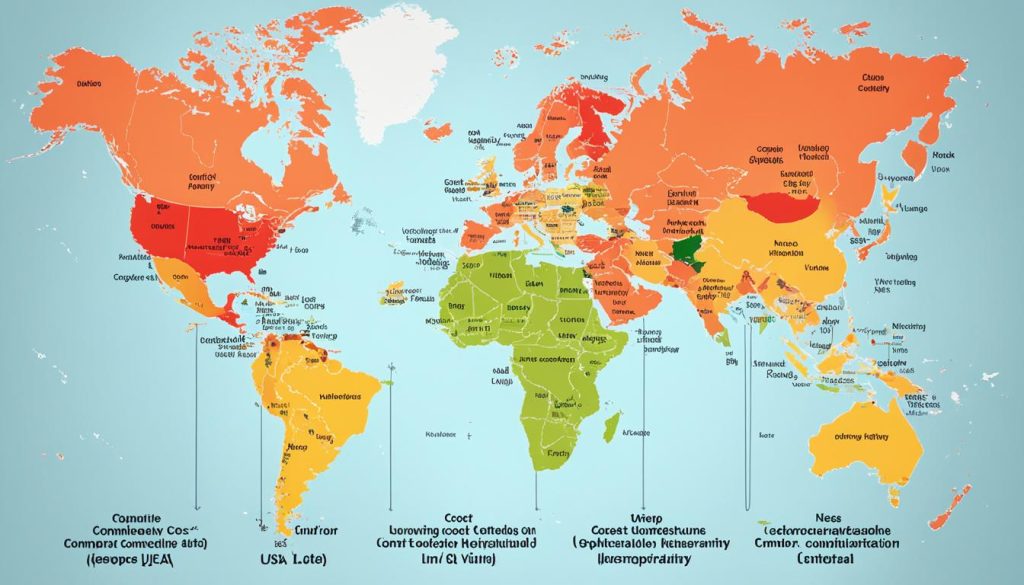
When looking at the cost of living index, we see that costs vary widely. This can really influence someone’s choice to move or visit another country. By comparing the costs between the USA and Europe, we get a clear idea of the differences in expenses. Let’s see how the numbers compare across the ocean.
-
In Ireland, the cost of living index is 110.62%, which is above the USA’s 100%. This shows living in Ireland can be more expensive than in the USA.
-
Turning to the Netherlands, it’s a different story. Here, the cost of living is at 88.20%. This makes the Netherlands a more affordable option compared to many other places.
This contrast sheds light on economic differences between regions. It also helps those planning their finances. Your income’s value can change a lot depending on where you are – in the US, Ireland, or the Netherlands. Understanding this economic comparison is key for planning your money wisely.
GDP and GNP Analysis: A Measure of Economic Strength
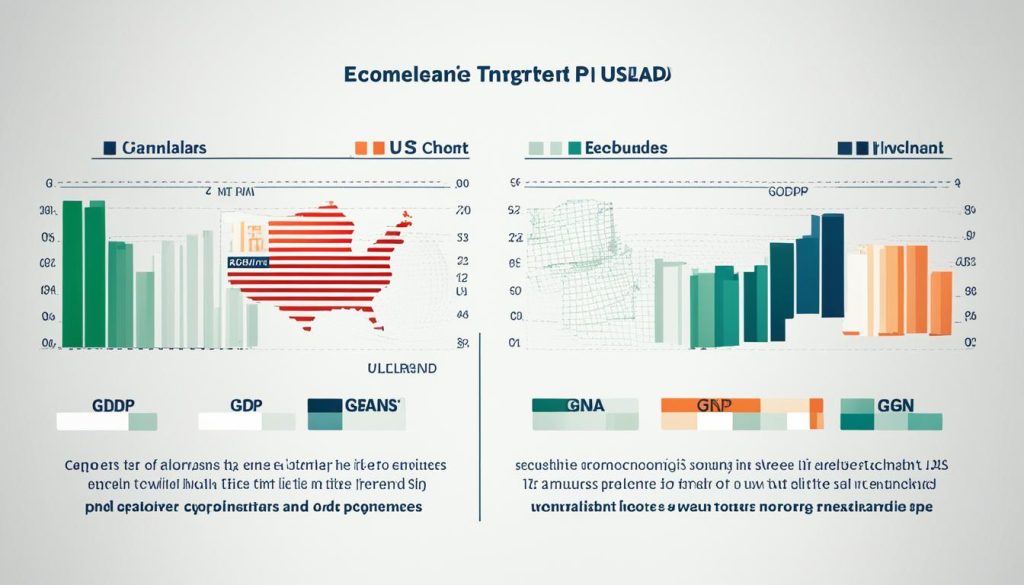
Gross Domestic Product (GDP) and Gross National Product (GNP) are crucial for assessing an economy. They reveal the total value of all goods and services produced within a country (GDP) and the total value including those made by its residents abroad (GNP). These measures help us understand a country’s economic strength and its position in global markets.
Comparing GDP and GNP Between Countries
Ireland has a strong economy with its GDP at $533,140 million USD and GNP at $408,767 million USD. The Netherlands also shows strong economic figures with a GDP of $1,009,399 million USD and a GNP of $1,066,103 million USD. These numbers show how European countries perform economically and their stand in international trade.
International Trade: Export & Import Statistics
-
Ireland excels in international trade, exporting goods worth $729,135 million USD. Its imports cost less, at $516,084 million USD. This suggests a healthy trade balance.
-
The Netherlands has even higher trade figures, exporting goods worth $944,421 million USD and importing goods costing $835,470 million USD. These numbers highlight its active involvement in global trade.
Looking at GDP and GNP alongside export and import values offers insights into fiscal health and trade dynamics of nations.
Infrastructure: The Foundation for Growth
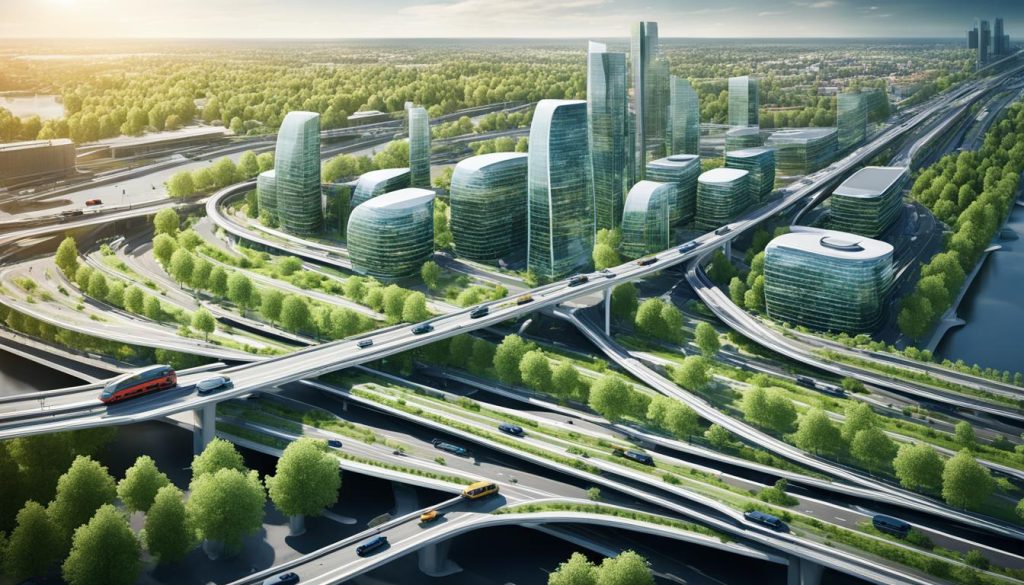
A thriving economy is built on strong transportation infrastructure. It enables economic movement and connects logistics. Networks of roads, railways, and waterways move people and goods, boosting trade. This helps regions develop. Efficient airports further support a nation’s global trade, using air travel to speed up growth. Together, these elements boost productivity and international goals.
Transportation Networks: Roadways, Railways, and Waterways
In Ireland, more than 100,000 km of roads support domestic commerce. Railways offer a key transport alternative, vital for moving goods and helping people commute. Ireland’s waterways, though smaller than those in other countries, are crucial for trade and tourism. The Netherlands, with its dense population, has an even bigger setup. It relies heavily on its 6,000 km of waterways for its economic activities.
Importance of Passenger Airports in Economic Expansion
Passenger airports play a key role in Ireland and the Netherlands. With 14 and 11 airports, these countries push growth through air travel. The Netherlands, though smaller, is a central European hub. This balance shows its strength in using airports for tourism and economic growth. It proves how air travel and trade strongly link to economic success.
Energy Sustainability and Environmental Footprint
Energy sustainability and cutting down on CO2 emissions are very important for sustainable development. They’re big parts of national policies worldwide. Ireland shows its support for sustainable energy with a production of 33,088.0 GWh. Yet, it faces the challenge of reducing CO2 emissions, which are at 33.74 million tonnes. The Netherlands produces more energy, 117,515.0 GWh, but it has to deal with higher CO2 emissions of 130.32 million tonnes.
Nations are working hard to find environmentally friendly ways to make energy. They need to balance environmental impact with society’s and the economy’s needs. Innovation and using renewable energy are key for sustainable development without losing energy security.
- Examination of renewable energy integration into national grids
- Assessment of policies aimed at reducing CO2 emissions
- Exploration of energy efficiency measures and public awareness campaigns
Keeping this balance is crucial for global ecological responsibility. Ireland and the Netherlands are working hard in this field. They’re helping not just themselves but also the global community. The link between energy production, CO2 emissions control, and sustainability is vital. It’s part of how nations protect our planet today.
Telecommunications: Connectivity and Internet Access
Telecoms play a key role in today’s digital world. In places like Ireland and the Netherlands, this is very clear. Ireland enjoys over 1.6 million broadband connections, mixing well into daily life. The Netherlands also shows a strong digital game with almost 7.8 million broadband subscriptions.
The reach of the internet goes beyond just connecting people; it shapes a knowledge-driven economy. Having widespread broadband is seen as key for growth and innovation. It shows an understanding that fast internet is vital for a thriving economy.
- Extensive digital infrastructure supports a multitude of activities from e-commerce to remote education, fuelling socio-economic expansion.
- Broadband connectivity ensures that citizens and enterprises are well-equipped for the demands of the digital age.
- Internet penetration not only connects individuals to global networks but also fortifies a country’s international competitiveness.
Tech upgrades in these countries are setting the stage for future breakthroughs. They tap into the endless opportunities of digital connectivity. This drives economic advancement, improves lives, and keeps them leading in the digital era.
Assessing Educational Systems and Workforce Expertise
A nation’s true strength often lies in its dedication to health education and developing skilled workers. One key element is how many medical professionals are available, an issue that Ireland and the Netherlands both focus on.
Physician and Hospital Bed Ratio
In Ireland, there are more doctors for every thousand people, which helps with medical staff availability. This means they can better respond to health needs. On the other hand, the Netherlands makes sure it has plenty of hospital beds for its people. This ensures everyone can get the care they need for their health.
Literacy Rates and Language Proficiency
Ireland is known for its high literacy rate and many people who can speak English. They also teach Irish to keep their culture alive. The Netherlands, though, has a lot of people who can read and write in Dutch. They also recognise the importance of regional languages. Both places understand how crucial language skills are for education. This makes it easier to work with people from around the world.
- Both countries have a solid base in health education, essential for medical staffing in the future.
- Education in Ireland and the Netherlands puts a lot of emphasis on learning languages. This helps in working globally and being effective.
When you mix these educational aspects, you get a workforce that’s not just skilled but can also communicate worldwide. This is vital for working in today’s diverse, multilingual business world.
Climate’s Influence on Lifestyle and Economy
Climatic conditions play a big role in our daily lives. They make us change our ways to fit the environment. This affects how economies perform too, showing how nature and business are linked. Knowing how temperature and weather affect people helps us understand their impact on our lives.
Analysing Temperature Averages and Climate Variability
Ireland and the Netherlands have different climates affecting daily life. Ireland’s cool weather means buildings must keep heat well, and they need good heating. The Netherlands enjoys more sunshine, creating chances for outdoor activities and farming.
The Impact of Weather on Productivity and Wellbeing
Weather affects more than just outdoor jobs; it influences how well people work in offices too. The milder weather in the Netherlands helps avoid delays in work, especially in building and transport. But, both countries have found smart ways to deal with weather ups and downs. This keeps life and work stable through the seasons.
Cultural Fabric: Languages and Religions
At the core of a nation’s identity is its cultural heritage. This heritage is like a beautiful quilt, made from languages and religions. Understanding this mix helps us see how a country’s society works. It shows us the beauty of living together in peace.
Native Languages: Preservation and Use
Language conservation is crucial. It shows how much we value our regional languages. In Ireland, while most people speak English, many also hold the Irish language dear. This effort keeps their linguistic culture alive.
In the Netherlands, Dutch is the main language. Yet, there’s a strong push to keep the Fries language going too. This shows the country’s respect for linguistic and cultural diversity.
Religious Diversity and Its Social Impacts
Looking at Ireland and the Netherlands, we see a rich mix of beliefs. Ireland has a Christian majority. But it also embraces many other faiths. This shows a commitment to living together in harmony.
The Netherlands has a different scene. Many there claim no religious ties. This highlights a broad spectrum of beliefs. Such variety makes the social fabric richer. It proves that respect and understanding are key to peace.
Conclusion
We’ve looked closely at the forces shaping life in the Netherlands, Ireland, and the USA. These countries, though very different, share high global economic rankings. They show us how nation’s politics and economy affect people’s happiness.
We saw how each country tries to make life better for its people. This includes healthcare, stability, good infrastructure, and caring for the environment. We learned that a country’s economic health, its society’s welfare, and cultural identity are closely linked.
Nations strive to mix economic growth with making life better for their people. We’ve seen how the living standards in these countries differ yet also share common goals. This teaches us that balanced growth is key. It’s about making money and improving the quality of life together.

